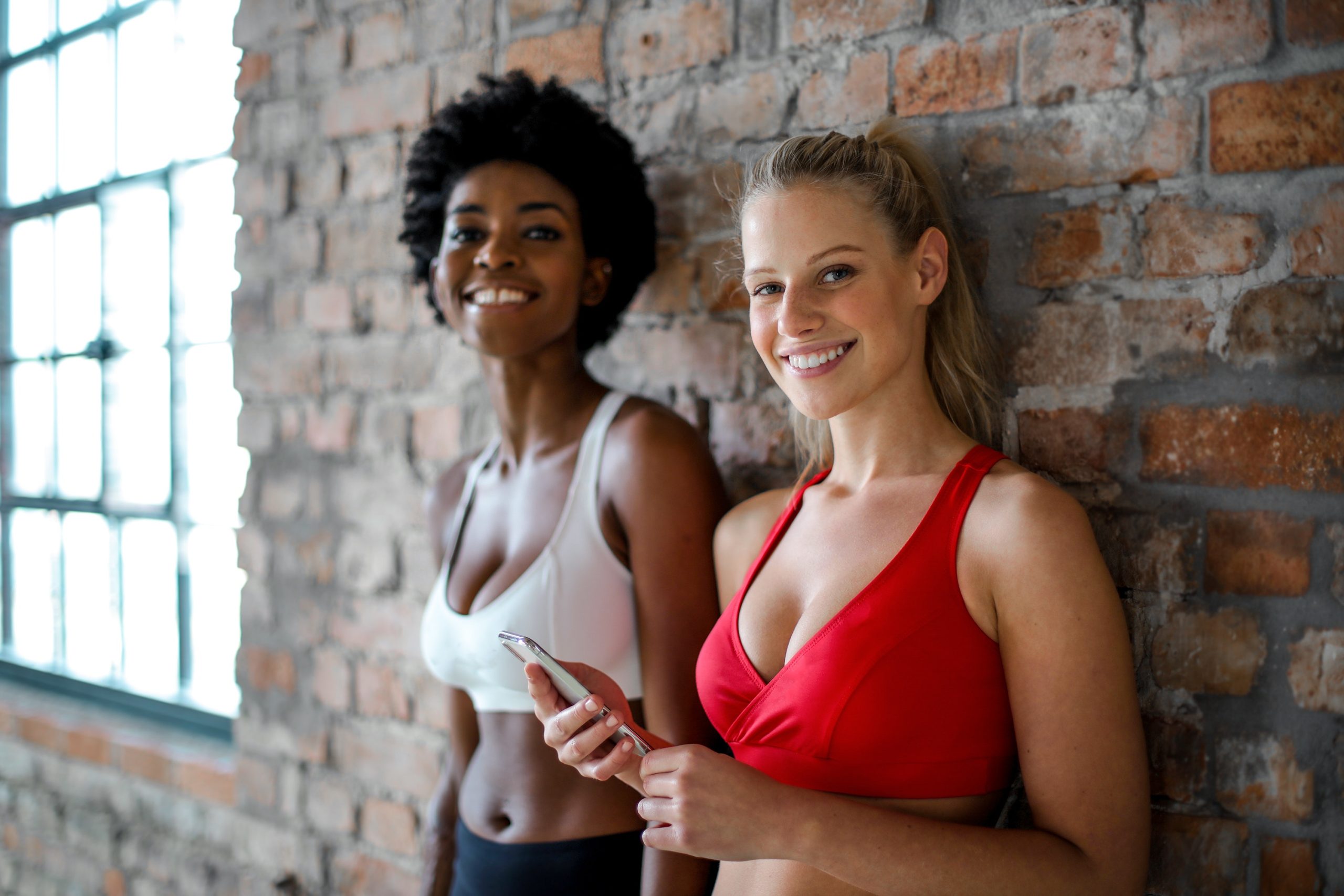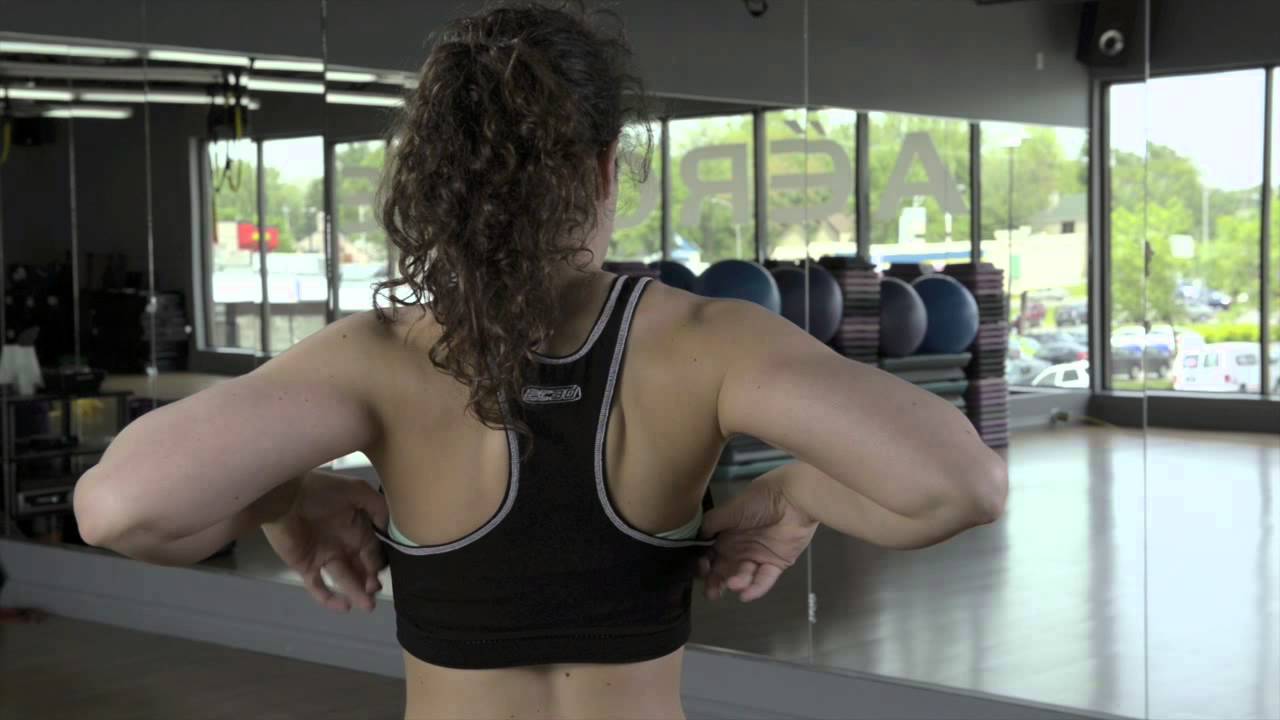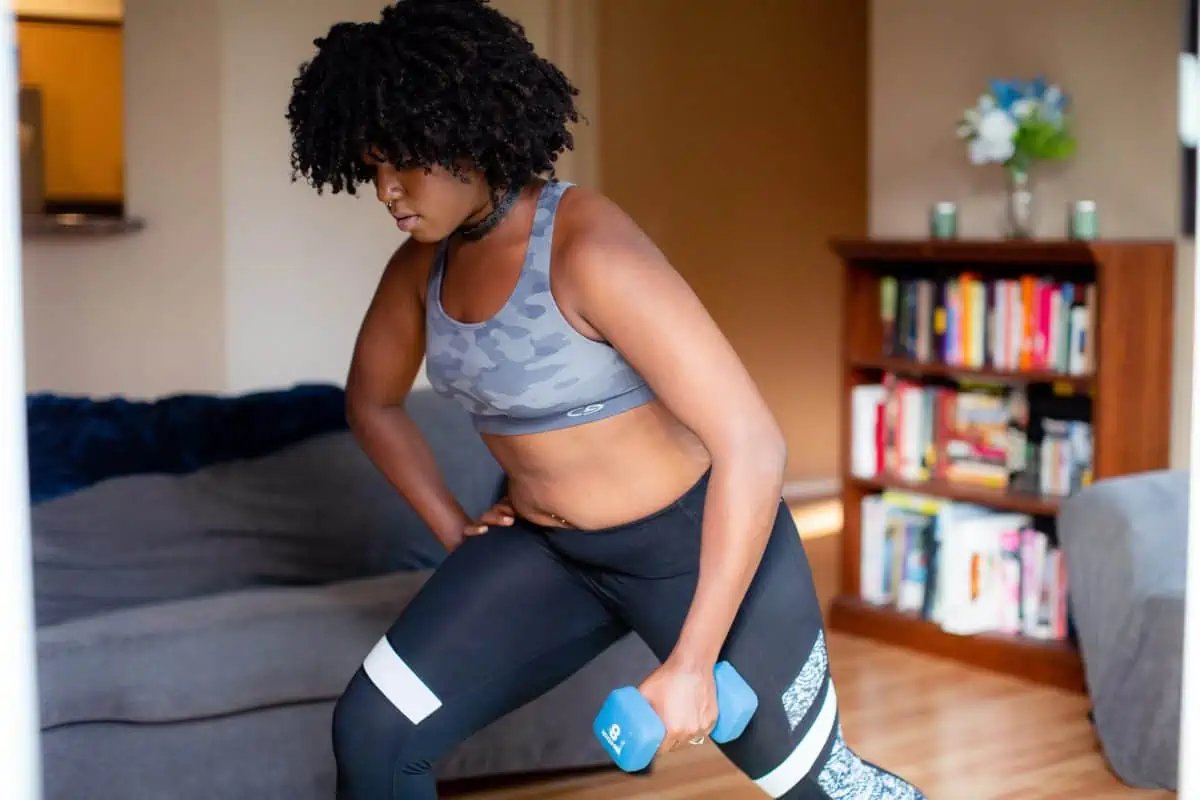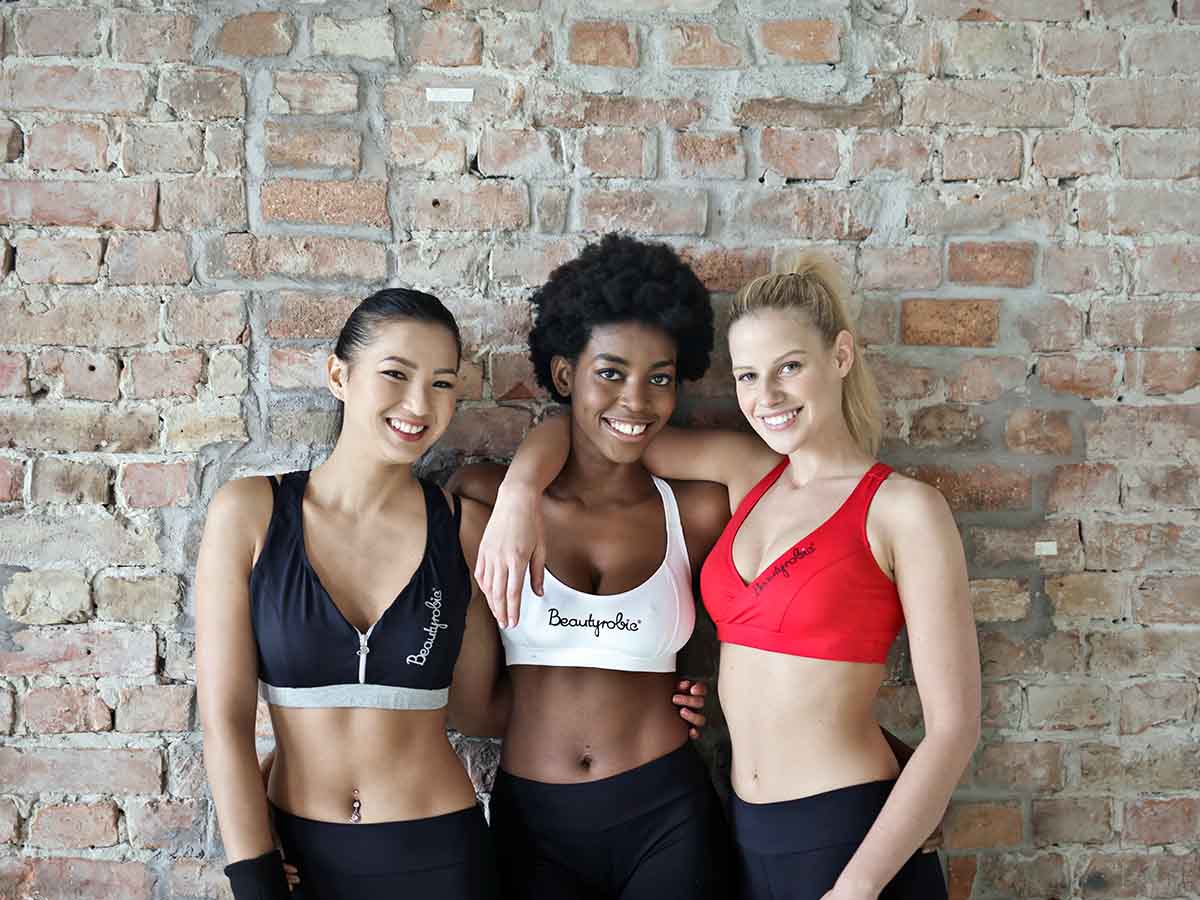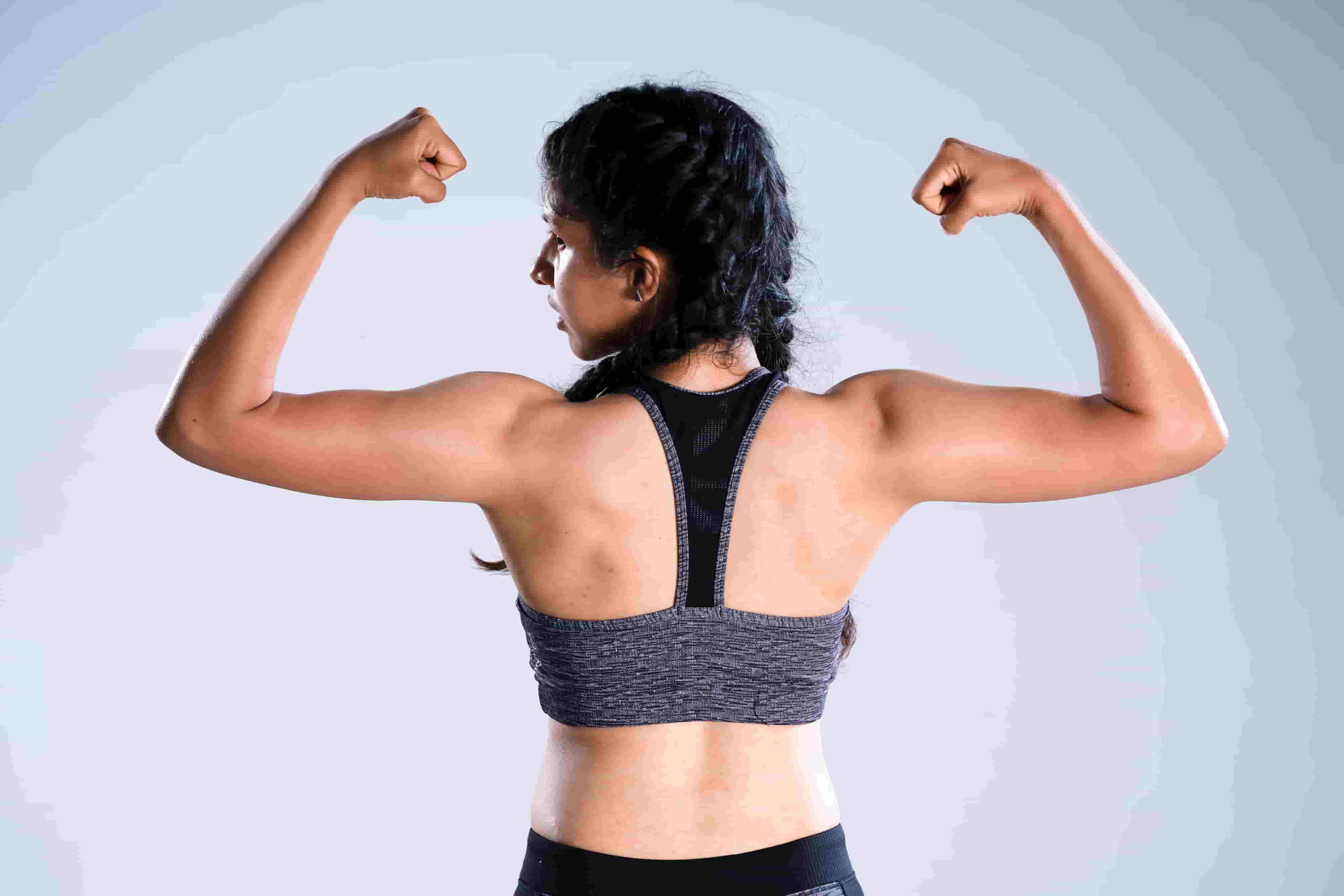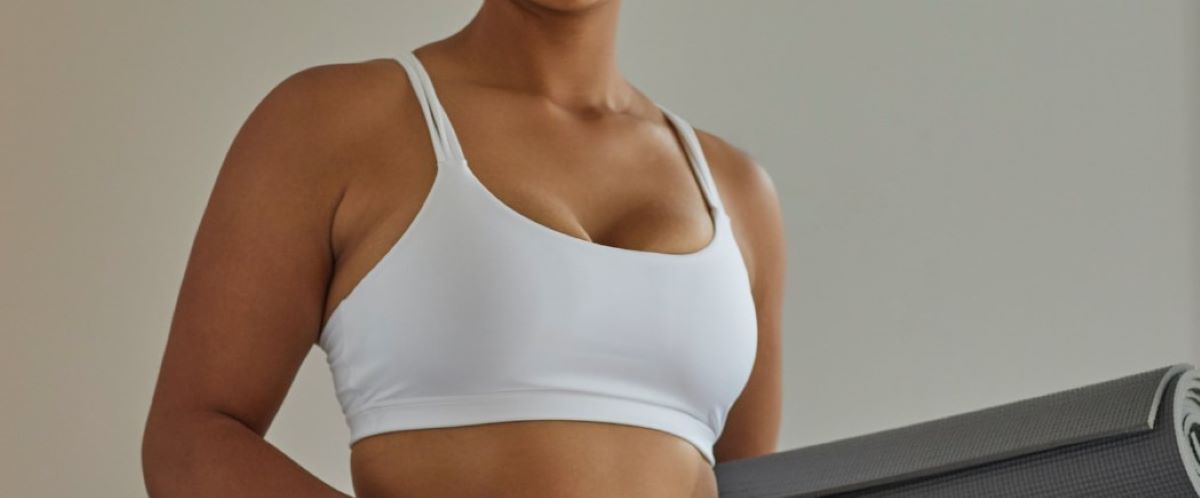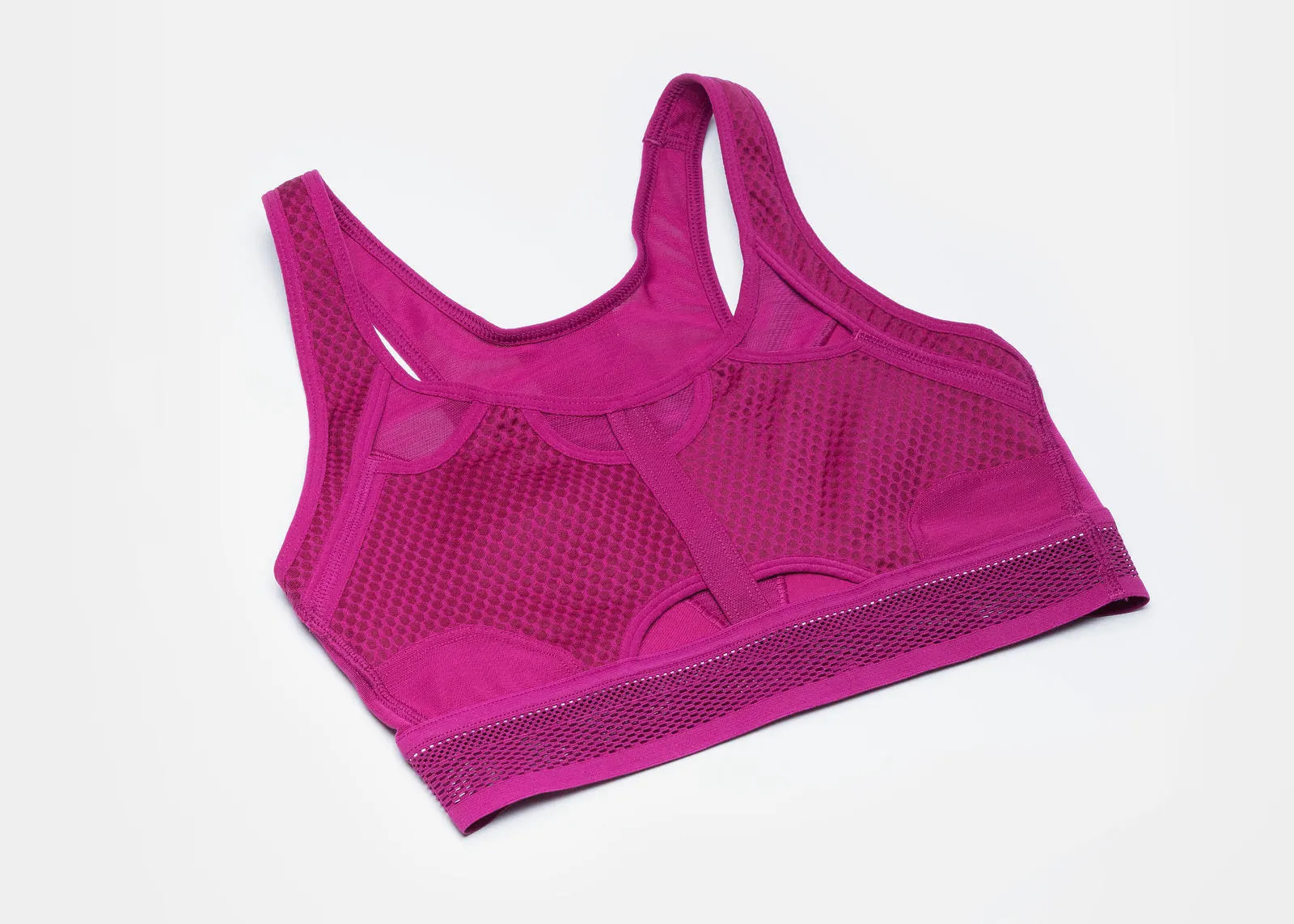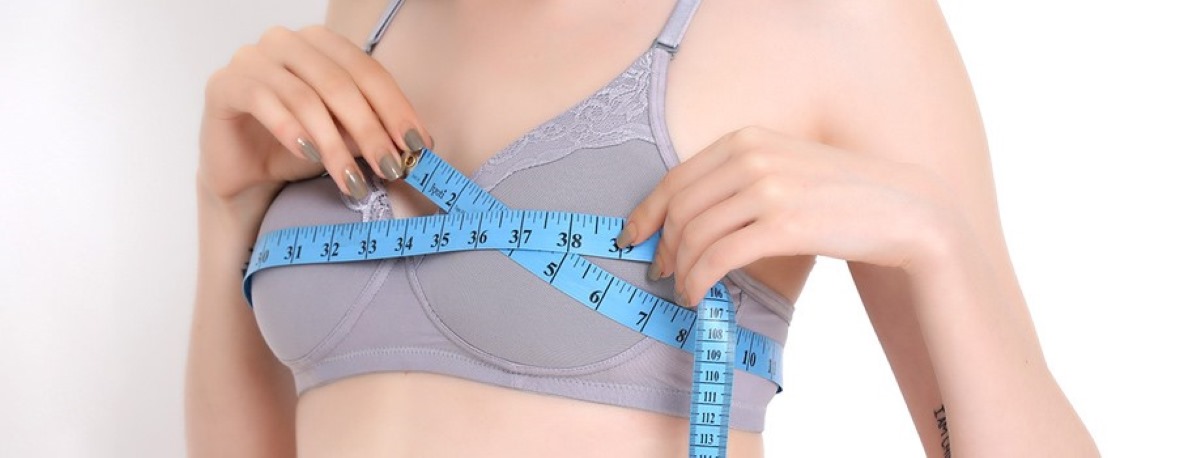Home>How-to Guides>For Women>How To Determine Sports Bra Size
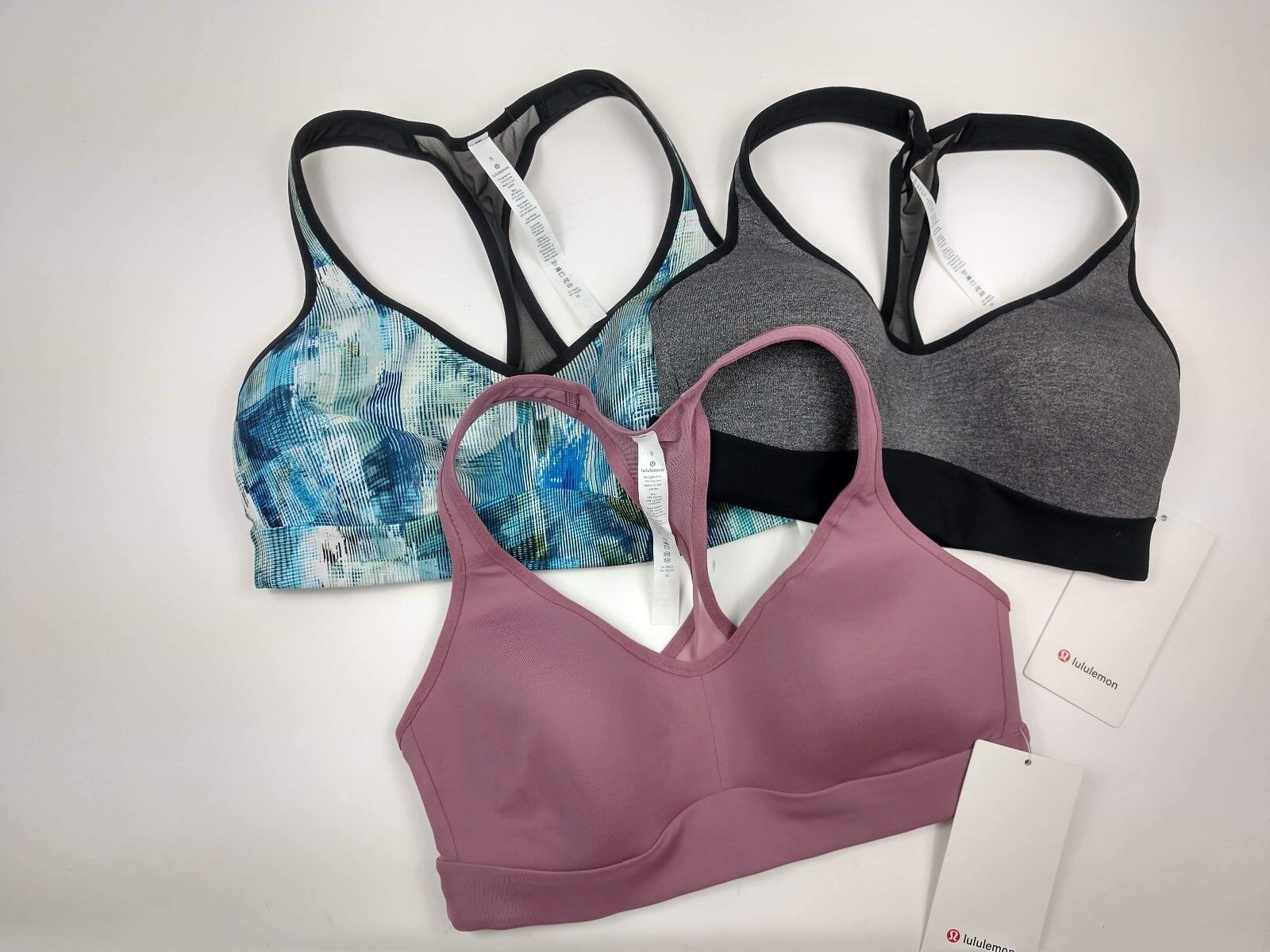

For Women
How To Determine Sports Bra Size
Modified: August 5, 2023
Learn how to determine the perfect sports bra size for women. Follow our step-by-step guide to find ultimate comfort and support.
(Many of the links in this article redirect to a specific reviewed product. Your purchase of these products through affiliate links helps to generate commission for Under-tec.com, at no extra cost. Learn more)
Table of Contents
Introduction
Welcome to our comprehensive guide on determining your sports bra size! Finding the perfect sports bra can make all the difference in comfort and support during your workouts and physical activities. Whether you’re a runner, a yogi, or a weightlifter, wearing the right sports bra is essential to prevent discomfort, pain, and even long-term damage to your breast tissue.
Many women underestimate the importance of wearing a properly fitting sports bra. It’s not just about feeling comfortable; it’s about protecting your breasts from excessive movement and potential injury. In fact, studies have shown that unsupported breasts can move up to 15 centimeters during exercise, causing strain on the ligaments and leading to breast sagging.
It’s important to remember that the size of your sports bra may differ from your regular bra size. Sports bras are specifically designed to provide a higher level of support and minimize bounce, so the fit will be different. In this guide, we will walk you through the steps to determine your sports bra size accurately.
Whether you are buying your first sports bra or needing to update your current one, understanding the correct sizing process is the first step. By measuring your band size and cup size correctly, you can ensure a comfortable fit that will support you during your workouts. Additionally, we will explore different sports bra styles and how to choose the perfect one based on your needs and preferences.
So, if you’re ready to find your ideal sports bra size and improve your workout experience, let’s dive into the world of sports bra sizing and get you on the path to maximum comfort and support!
Understanding Sports Bra Sizing
When it comes to sports bra sizing, it may seem complex at first, but with a little knowledge, it becomes much easier to decipher. Sports bras typically use a combination of band size and cup size to determine the perfect fit. Let’s break it down:
Band Size: The band size refers to the measurement around your ribcage, just below the breasts. It provides the primary support of the sports bra. Band sizes are typically represented by numbers, such as 32, 34, 36, etc. To measure your band size, wrap a measuring tape snugly around your ribcage, ensuring it’s parallel to the ground. Take note of the measurement in inches.
Cup Size: The cup size refers to the volume of your breasts and is determined by the difference between your band measurement and bust measurement. Cup sizes are represented by letters, such as A, B, C, D, etc. To measure your cup size, measure around the fullest part of your breasts, making sure the tape is snug but not too tight. Subtract your band measurement from your bust measurement to determine your cup size. For example, if the difference is 1 inch, you would be an A cup, if it’s 2 inches, a B cup, and so on.
It’s important to note that sports bra sizing can vary depending on the brand and style. Some brands may use a combination of numbers and letters to indicate the size, such as 34C or 36D. Others may use a simplified sizing system, such as small, medium, large. Be sure to consult the brand’s sizing chart to find the best fit for you.
Keep in mind that getting an accurate sports bra size is crucial for optimal support and comfort. Wearing a bra that is too small can result in compression, leading to restricted movement and discomfort during exercise. On the other hand, a bra that is too large may not provide enough support, causing potential strain on the ligaments and breasts.
Now that we have covered the basics of sports bra sizing, let’s move on to the next step: measuring your band size!
Measuring Your Band Size
Measuring your band size is an essential step in finding the right sports bra fit. The band provides the primary support for your breasts, so it’s crucial to get an accurate measurement. Here’s how to measure your band size:
1. Start by wearing a non-padded bra or no bra at all. This will ensure that your measurements are as accurate as possible.
2. Take a soft measuring tape and wrap it around your ribcage, just below your breasts. Make sure the tape is parallel to the ground and snug but not overly tight. The tape should be in contact with your skin, without digging in.
3. Exhale and measure the circumference of your ribcage. Take note of the measurement in inches.
4. Once you have your ribcage measurement, round it to the nearest whole number. This will be your band size. If the measurement is an odd number, you can choose to round up or down, depending on your personal preference for a snug or slightly looser fit.
For example, if your ribcage measurement is 31.5 inches, you should round it to 32 inches, resulting in a band size of 32.
Remember, your band size should feel comfortably snug, providing support without feeling constricting. If the band rides up or feels too tight, it’s an indicator that you may need to adjust your band size accordingly.
Now that you have determined your band size, we can move on to the next step: determining your cup size!
Determining Your Cup Size
After measuring your band size, the next step in finding your correct sports bra fit is determining your cup size. The cup size represents the volume of your breasts and is determined by the difference between your band measurement and bust measurement. Here’s how to determine your cup size:
1. Take a soft measuring tape and wrap it around the fullest part of your breasts. Make sure the tape is parallel to the ground and not too loose or too tight. It should be in contact with your skin without digging in.
2. Take note of the measurement in inches.
3. Subtract your band measurement (step 4 from the previous section) from your bust measurement. The difference will determine your cup size.
Here is a general guideline to help you determine your cup size based on the difference:
- If the difference is less than 1 inch, your cup size is A.
- If the difference is 1 inch, your cup size is B.
- If the difference is 2 inches, your cup size is C.
- If the difference is 3 inches, your cup size is D.
- If the difference is 4 inches, your cup size is DD or E.
- If the difference is 5 inches, your cup size is DDD or F.
- If the difference is 6 inches, your cup size is G.
- If the difference is 7 inches, your cup size is H.
- If the difference is 8 inches, your cup size is I.
Keep in mind that cup sizes may vary slightly depending on the brand. It’s always a good idea to refer to the specific brand’s sizing chart for accurate cup size conversions.
Now that you have determined your cup size, you are one step closer to finding the perfect sports bra fit. In the next section, we will discuss different sports bra styles and how to choose the right one for you!
Choosing the Right Sports Bra Style
With numerous sports bra styles available, it’s important to choose one that suits your specific needs and preferences. Different sports bra styles offer varying levels of support, coverage, and design features. Here are some common sports bra styles to consider:
1. Compression Bras: Compression bras are designed to compress the breasts against the chest wall, minimizing movement. They are ideal for low to medium-impact activities and are suitable for women with smaller cup sizes.
2. Encapsulation Bras: Encapsulation bras have separate cups to provide individual support to each breast. They offer more shaping and definition and are suitable for medium to high-impact activities. Encapsulation bras are a great choice for women with larger cup sizes who require extra support.
3. Racerback Bras: Racerback bras have straps that come together in a “V” shape at the back, allowing for a wider range of shoulder movement. They offer excellent support and are popular for activities that involve a lot of arm and upper body movement.
4. Adjustable Bras: Adjustable bras have straps and bands that can be adjusted to customize the fit. They provide flexibility and are suitable for women who may need additional support and comfort.
5. Sports Bra with Underwire: Sports bras with underwire provide additional support and lift. They are a great choice for high-impact activities and for women who prefer a more structured bra.
6. Front Closure Bras: Front closure bras have a clasp or zipper in the front, making them easy to put on and take off. They are convenient and ideal for women who have mobility limitations or prefer a hassle-free bra closure.
Consider your specific activity level, breast size, and personal preferences when selecting a sports bra style. It’s important to choose a style that offers the right level of support for your chosen activities to ensure maximum comfort and performance.
Additionally, pay attention to the fabric and breathability of the sports bra. Look for moisture-wicking materials that will keep you cool and dry during workouts. Adjustable straps, a wide band, and a comfortable underband are also important factors to consider when choosing the right sports bra for you.
Now that you have a good understanding of different sports bra styles, the next step is to try them on and ensure a proper fit. In the next section, we will delve into the importance of trying on sports bras before making a purchase.
Trying On Sports Bras
Trying on sports bras is an essential part of the process to ensure you find the perfect fit. While accurate measurements are crucial, the fit can still vary depending on factors like brand, style, and personal preference. Here are some tips for trying on sports bras:
1. Start with your measured size: Begin by trying on sports bras in the size indicated by your measurements. This will serve as a starting point and help you narrow down the options.
2. Assess the band: The band should fit snugly around your ribcage without feeling too tight or digging into your skin. It should provide support and stay in place during movements.
3. Check the cup size: Make sure the cup size covers your entire breast, without cutting into the breast tissue or leaving any gaps. The cups should encapsulate and support each breast comfortably.
4. Evaluate the straps: The straps should be adjustable and provide the desired level of support. They should not dig into your shoulders or slide off during activity. Adjust the straps to ensure a secure and comfortable fit.
5. Move around: Don’t just stand still in the fitting room. Move around, simulate your typical workout movements, and jump or jog in place. This will give you a better sense of how the sports bra will perform during exercise.
6. Check for any discomfort: Pay attention to any areas of discomfort, such as underwire poking or rubbing, chafing on the back or shoulders, or a band that feels too constricting. A sports bra should feel snug and supportive, but not overly tight or painful.
It’s important to remember that every woman’s body is unique, and what works for one person may not work for another. Take your time and try on multiple brands, styles, and sizes to find the sports bras that provide the best fit and support for your body.
If possible, try purchasing from a store that specializes in athletic apparel or offers a wide range of sports bra options. The staff can offer guidance and recommendations based on your needs and preferences.
By investing some time and effort into trying on sports bras, you can ensure that you find the perfect fit that will provide you with comfort, support, and confidence during your workouts.
Once you have found the ideal sports bra for your needs, it’s important to take proper care of it to ensure its longevity and performance. In the next section, we will discuss the maintenance and care of sports bras.
Care and Maintenance of Sports Bras
Proper care and maintenance of your sports bras are essential to prolong their lifespan and keep them performing at their best. Here are some tips for caring for your sports bras:
1. Wash after each use: It’s important to wash your sports bra after every workout to remove sweat, bacteria, and odor. Follow the instructions on the care label, but typically, hand washing or using a gentle machine cycle with cold water is recommended.
2. Use a mild detergent: Opt for a mild detergent that is specifically designed for delicate fabrics. Avoid using fabric softeners, as they can decrease the fabric’s moisture-wicking properties and elasticity.
3. Air dry: Hang your sports bras to air dry instead of using a dryer. Heat can damage the elastic and fabric, leading to a shortened lifespan. Avoid wringing or twisting the bra, as this can distort its shape.
4. Store properly: To maintain their shape and support, store your sports bras by folding them in half, with the cups positioned inside one another. Avoid crumpling or stuffing them in a drawer.
5. Rotate your bras: It’s a good idea to have multiple sports bras in rotation. This allows each bra to rest and regain its elasticity between wears. Rotating your bras also ensures that you have a clean and fresh bra available for every workout.
6. Check for signs of wear: Regularly inspect your sports bras for signs of wear and tear, such as stretched-out bands, faded colors, loose threads, or sagging cups. If you notice any significant damage, it may be time to replace your sports bra.
By following these care and maintenance tips, you can extend the lifespan of your sports bras and ensure they continue to provide the necessary support and comfort during your workouts.
Now that you know how to care for your sports bras, you are ready to find the perfect fit and enjoy the benefits they provide. Don’t forget to re-evaluate your sports bra size periodically, as factors such as weight loss, weight gain, or changes in fitness routines can impact your bra size.
Remember, investing in the right sports bra that fits properly is essential for your comfort, confidence, and overall well-being during physical activities. With the right sports bra, you can focus on your workouts and enjoy the support you need!
Conclusion
Choosing the right sports bra is not only about comfort and style but also about protecting your breast tissue from excessive movement during physical activities. By understanding sports bra sizing, measuring your band size and cup size accurately, and trying on different styles, you can find a sports bra that provides optimal support and comfort.
Remember that sports bra sizing may differ from regular bra sizing, so it’s important to measure yourself specifically for sports bras. Pay attention to factors like band fit, cup size, adjustable straps, and the style that best suits your needs and preferences.
In addition to finding the right sports bra, taking care of your bras through proper washing, storing, and regular inspection is crucial to maintaining their performance and longevity.
With the right sports bra, you can focus on your workouts and activities, knowing that you have the support and comfort you need. So, go ahead and start your search for the perfect sports bra, and enjoy the benefits of a well-fitted and supportive companion during your fitness journey!
